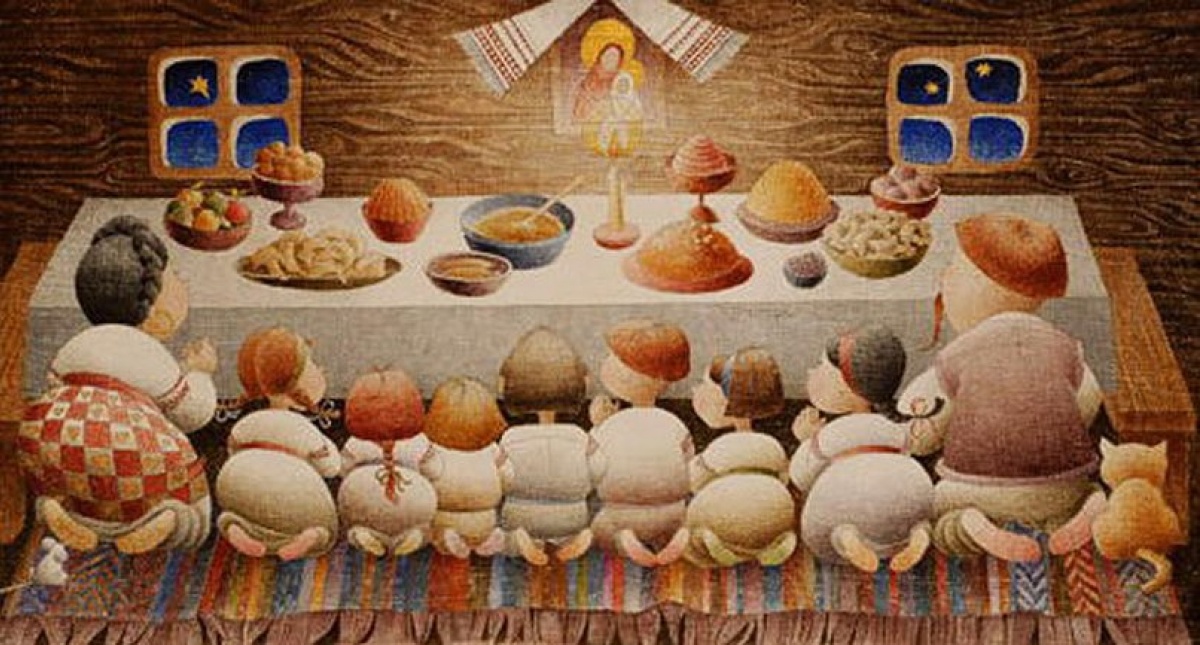There's a Ukrainian folksong that you know. Except that you don't know it's Ukrainian, and a folksong. One of the world's most famous Christmas carols, Carol of the Bells, originated in Ukraine but spread to all five continents and today is being rearranged and remixed by musicians worldwide. What is less known is that original song, Shchedryk, was an arrangement of Ukrainian folk music by composer Mykola Leontovych, and speaks about a bountiful swallow. We follow the path of Ukraine's largest international musical success, from folklore to world fame.
A Ukrainian creative genius killed by the bolsheviks
100 years ago, on 19 December 1916, the choir at the St.Volodymyr University in Kyiv for the first time performed an arrangement of a Ukrainian folksong by Ukrainian composer Mykola Leontovych. The choir's conductor, Oleksandr Koshyts, compelled Leontovych to cut the perfectionism and finally show his creation to the world: Leontovych had been working on the arrangement of the song consisting of only three notes, a task from his music teacher, for 15 years, producing already four different versions of the score (he would write the fifth one in 1919).
The choir continues to exist to this very day, tours Europe and is the oldest continuously performing choir in Ukraine. Here is their performance of Shchedryk in 2011:

It were the last months of the Russian Empire, and the largely self-taught composer and music enthusiast, born in the family of a priest near modern-day Vynnytsia in Ukraine, was one of the cultural figures that, in the spirit of the times, joined the artistic pursuit of uncovering - and creating - the Ukrainian national music tradition. To the present day, he is known by his choir arrangement of Ukrainian folksongs.
The 1916 performance of the piece had a huge success with the Kyiv public, and in 1917, when the short-lived independent Ukrainian National Republic (UNR) was established, Leontovych moved to Kyiv and was active as a composer and conductor throughout the rule of the UNR and, later, bolsheviks that captured the city. When the army of Denikin, who fought to reinstate the Russian Empire against the bolsheviks, unleashed a terror campaign against the Ukrainian intelligentsia which reminded about an independent Ukrainian state, Leontovych was forced to leave the Ukrainian capital but not music. He was just finishing the opera "The Rusalka's Easter" in 1921 when he was assassinated by a bolshevik Cheka agent in 1921 under the pretext of being suspected of secretly "engaging in nationalist activities." Leontovych let the agent in to spend the night, a common practice of hospitality for travelers in those days.
Related: Ukraine’s Executed Renaissance and a kickstarter for one of its modern successors
The story of the assassination was thoroughly covered up in Soviet times and came to light only in 1990 when the KGB archives were opened up. This tragic murder of a Ukrainian creative spirit was a harbinger of the future Soviet execution-to-come of the Ukrainian cultural elites in Stalin's terror campaign of the 1930's. No one would be spared, the national cultural leaders would either be killed or terrorized into praising the communist leaders. Ukraine would once again be bereft of its identity and voice.
The road to world fame
The success of Leontovych's Shchedryk in Kyiv paved its path into the permanent repertoire of Ukrainian choirs. So after the UNR wrestled its way back to power in 1918-1920, it was one of songs that its Ukrainian National Cappella took on its international tour. The 80-member Cappella, created to generate international empathy for the struggling Ukrainian state attacked from all sides by promoting its culture abroad, was directed by the same Koshyts that urged Leontovych to finally present his Shchedryk arrangement. It left for Europe and the USA, never to return - after the bolsheviks captured Kyiv for good, there was nowhere to return to.
The Cappella made successful performances in Czechoslovakia, Austria, Switzerland, France, Belgium, Hollande, Great Britain, and Germany, where it splintered into several groups. The main one continued its journey until it reached the USA in 1921, where it stayed, and until this day exists in Canada as the O. Koshetz Choir in Winnitoba.
To the USA, the Capella brought Shchedryk. On 5 October 1921, the song was performed at Carnegie Hall in New York, where reportedly it was a huge success. The earliest recording available on the internet is one from 1922, again in New York city.
https://www.youtube.com/watch?v=lXQ15PyKM-M
In 1936, Peter Wilhousky, an American composer of Ukrainian origin, made an English adaptation of the original Ukrainian lyrics, in which he spoke about the ringing of bells that chase all cares away. Born to Ukrainian emigrants in 1902, Wihousky like Leontovych was immersed in the Ukrainian orthodox choral church tradition and is known for his choral arrangements in the US. Onwards, Shchedryk would become world known as Carol of the Bells.
Read also: The Unknown Ukrainian Carol that everyone knows
Three different versions of lyrics
The very first Shchedryk prototype was a carol sung on Epiphany, January 19. Translated word for word, it goes "There on the river Jordan, the Holy Virgin was washing the cloths, wrapping Her Son. From nowhere did angels appear and take the cloths on their wings, taking them to the skies. And the skies opened up, and all the Holy Ones bowed down," and exists in multiple regional variations, one of which is below:
https://www.youtube.com/watch?v=3Hnyt5Z-XWE
Leontovych created his version by employing shchedryk, a mythical Ukrainian character that brings along a bountiful year and good fortune. Shchedrivkas are sung around the Old New Year on 13 January, when carolers visit homesteads bestowing their owners a plentiful year, and boys sprinkle them with wheat, as part of a fertility ritual. Interestingly, the tradition of singing these carols is thought to have migrated from spring, when the New Year was celebrated before 1700 when Russian Tsar Peter I moved it to the winter in line with European traditions. Thus, Shchedryk speaks about a swallow which returned from its winter migration to bestow earthly goods upon the homemaster:
Shchedryk shchedryk, shchedrivochka, |
Shchedryk, shchedryk, a shchedrivka [New Year's carol]; |
|---|---|
pryletila lastivochka, |
A little swallow flew [into the household] |
stala sobi shchebetaty, |
and started to twitter, |
hospodarya vyklykaty: |
to summon the master: |
"Vyydy, vyydy, hospodaryu, |
"Come out, come out, O master [of the household], |
podyvysya na kosharu, |
look at the sheep pen, |
tam ovechky pokotylys’, |
there the ewes are nestling |
a yahnychky narodylys’. |
and the lambkin have been born |
V tebe tovar ves’ khoroshyy, |
Your goods [livestock] are great, |
budesh’ maty mirku hroshey, |
you will have a lot of money, [by selling them] |
V tebe tovar ves’ khoroshyy, |
Your goods [livestock] are great, |
budesh’ maty mirku hroshey, |
you will have a lot of money, [by selling them] |
khoch ne hroshey, to polova: |
if not money, then chaff: [from all the grain you will harvest] |
v tebe zhinka chornobrova." |
you have a dark-eyebrowed [beautiful] wife." |
Shchedryk shchedryk, shchedrivochka, |
Shchedryk, shchedryk, a shchedrivka, |
pryletila lastivochka. |
A little swallow flew. |
Recently, these lyrics received a poetic English translation in Great Britain:
Musicians worldwide perform Carol of the Bells
100 years after Shchedryk
's first performance, the Carol is beloved around the world. First of all, in Leontovych's hometown, Vinnytsia, where the bell tower now strikes chords from the now world-famous song:
This acapella version by Pentatonix is well known:
Destiny’s Child also did a nice acapella version on their 8 Days of Christmas album called Opera Of The Bells:
The Ukrainian acapella band Pikkardiyskaya Tertsiya made this jazzy rendition:
But the original Ukrainian lyrics of Shchedryk are also receiving their slice of fame. Here is a recent performance by Katie Melua and the Gori Women's Choir:
And by the Bel Canto Choir Vilnius:
Meanwhile, the NBA used their basketballs to recreate Shchedryk:
The Ukrainian B&B (Bandura & button accordion) project made this instrumental version:
Carol of the Bells can be heard in Harry Potter:
https://www.youtube.com/watch?v=kagXP2e8pyM
The Muppets also had their take:
But of course, that's only a small part of Shchedryk arrangements and covers. Find more Shchedryk remakes on this site.
To this day, carolers sing Leontovych's Shchedryk around Christmas season in Ukraine. You can watch how everyday life gets transformed in a busy Ukrainian metropolis when a swallow leads caroling kids on their yearly quest in this animation put to a cover of Leontovych’s Shchedryk, known worldwide as Carol of the Bells, produced by Oleh Skrypka:





